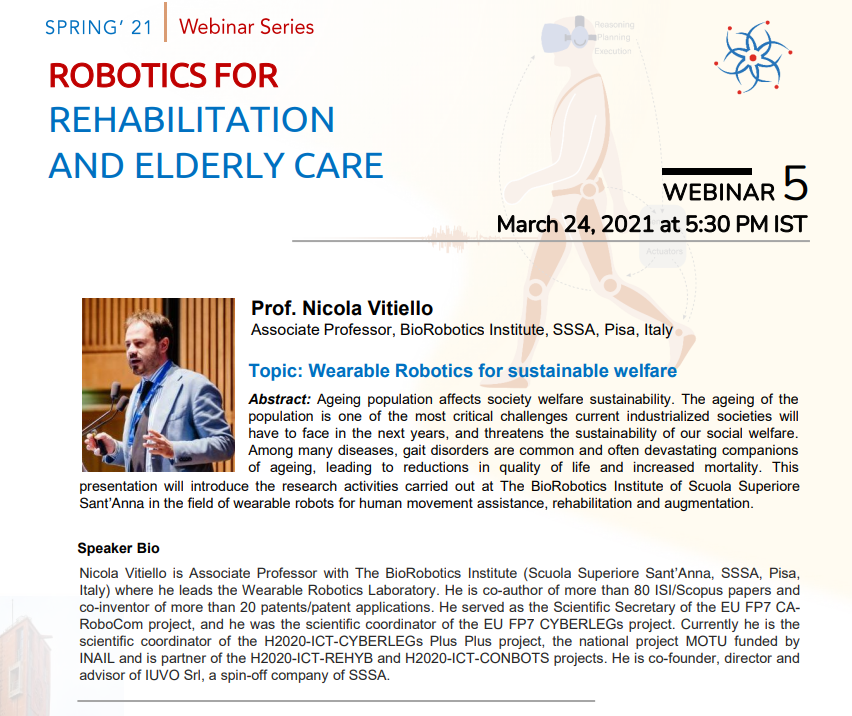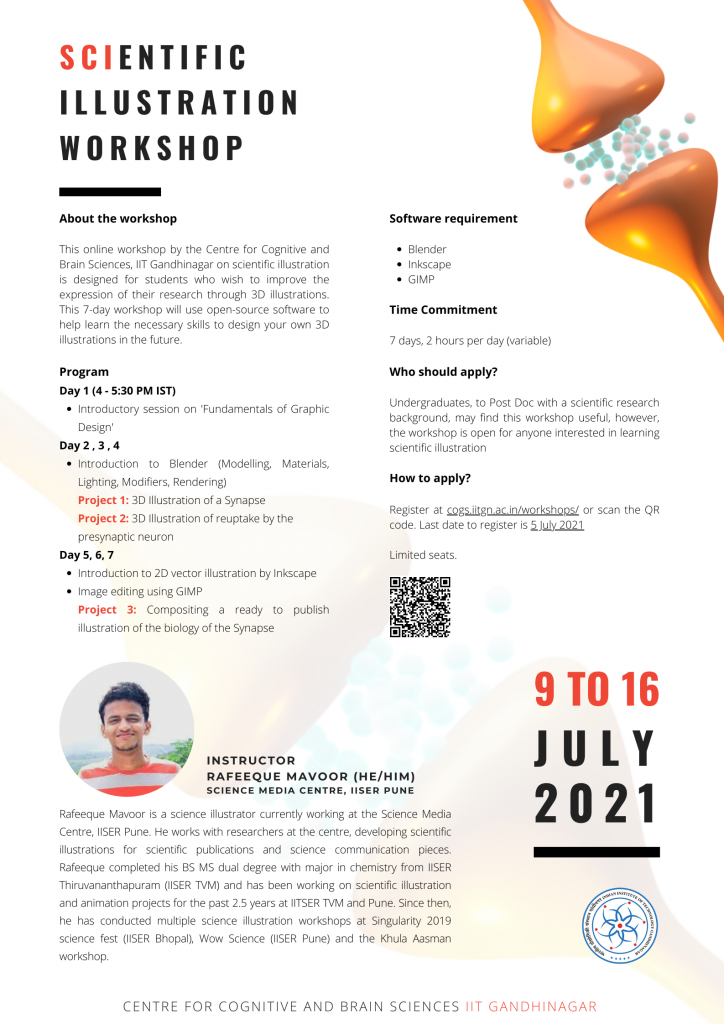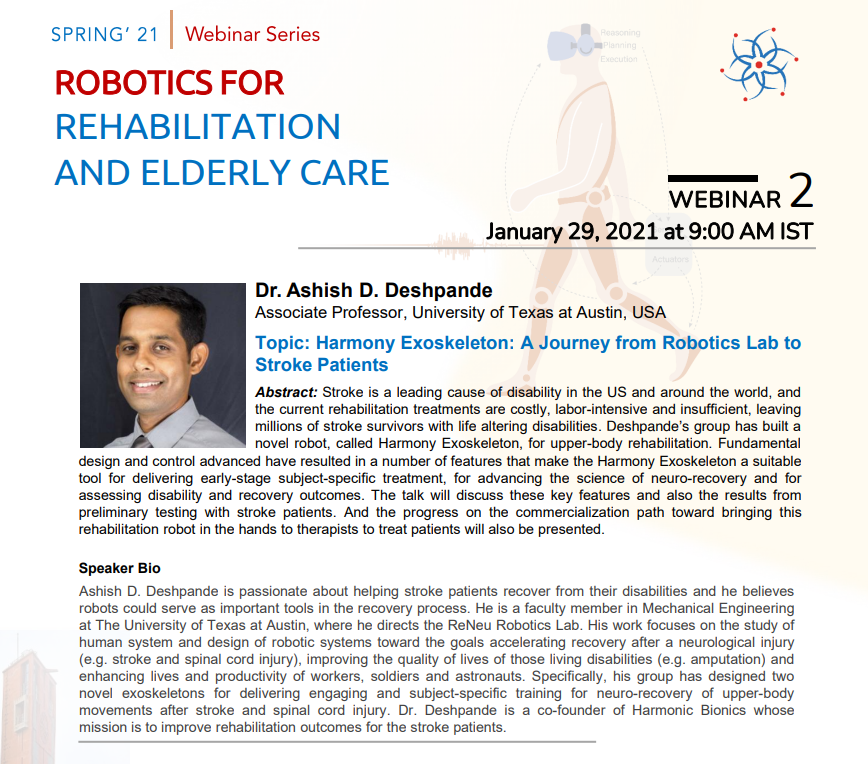The Brain Awareness Week (BAW) is an annually celebrated international event, targeted at non-specialists and children to educate and build curiosity in the way the brain works. In the year 2021, the BAW was scheduled to be celebrated from March 15-21. The event’s activities are designed not only to build awareness about brain science but also to create research opportunities and introduce complex concepts in neuroscience to younger audiences. The Centre for Cognitive and Brain Sciences at IIT Gandhinagar (IITGN) hosted the Brain Awareness Week from 15 to 21 March 2021. While keeping the COVID situation in mind and to increase the participation by the public across India, the BAW event hosted by IITGN was celebrated virtually with no registration fee from the participants. The event included talks, workshops, and panel discussions by brain researchers across the globe and various competitions for registered attendees to increase their active participation in the event. The talks were aimed at beginners or non-specialists in neuroscience, and it was brilliant to see giants in neuroscience break down complex concepts for this novice audience. With 1456 registrations, 59% of the participants were of 18 to 29 years of age. We saw a diverse mix within the audience as working professionals, homemakers, students from sciences and arts participated in the event. The academic background of registered attendees was distributed among Biology, healthcare, Psychology, linguistics, and Cognitive Science majors holding 44% of the registrations.
WEBINARS
The first day was packed with scientific talks from renowned scientists of Indian Institutions. The event was kick-started with Prof. Raghav Rajan from the Indian Institute of Science Education and Research, giving his talk on zebra finch, a songbird, as a model system to study motor initiation. He introduced the song sequence of the adult male zebra finch, which consists of a stereotyped sequence of sounds, interleaved by silent gaps and is about 0.5 to 1 second in duration. He showed through that this song sequence is learned by young birds from an adult male (typically their father) and explained why it is a well-studied example of a complex, learned movement sequence. He then explained to the audience how they use a combination of behavioral experiments, electrophysiological recordings, and data analysis, work in their lab which is focused on determining the neural events that precede the start of the self-triggered “alone” song. Following his talk, Dr. Vishal Kapoor from Max Planck Institute for Biological Cybernetics, Tübingen, spoke on visual perception in the primate brain. He introduced single-neuron studies in primates with multi-stable visual stimuli paradigms and discussed the insights it provided about the neural correlates of conscious vision.
Dr. Sachin Deshmukh from the Indian Institute of Science spoke next on spatial maps and the role of the hippocampus. He introduced the audience to the hippocampus as part of the brain and its role in spatial navigation and episodic memory. He talked about place cells and went further to describe them as an abstract cognitive construct rather than a simple representation of what sensory stimuli are encountered where. He discussed his work on how such a representation is created by interactions between the hippocampus and its inputs, and how it can be used in navigation and memory.
The last talk of day one was given by Sara Hussain from the University of Texas. She introduced the audience to brain waves and how they help treat brain disorders. She discussed studies that explain the role of brain waves in movement and how this knowledge can help treat motor deficits in patients with stroke.
Day two had two speakers speaking about visual and acoustic systems. Dr. Supriya Ray from the Centre of Behavioural and Cognitive Sciences spoke on visual systems and how studying eye movements reveals the functionality and computations in the brain that underlie behavior. He discussed eye-tracking studies that have contributed to the understanding of how the brain plans and executes an action.
Following the talk, Dr. Bittu K Rajaraman from Ashoka University spoke on the Evolution of Neural Systems: matched acoustic communication systems in Orthoptera. He introduced audiences to Crickets and bush crickets acoustic communication systems and discussed multiple origins and losses of convergent auditory and call production systems over generations. Through this, the talk focused on explaining sound production and sound reception systems that evolve together in order to enable successful communication.
Day three saw three talks and a panel discussion. Prof Anindya Gosh Roy from National Brain Research Centre began the session by talking about clinical conditions such as traumatic injury in the nervous system that leads to conditions such as paralysis. Through his talk, he discussed how the simple nematode C. elegans with a known connectome could be key in learning about the biology of nervous system repair and its future implications.
Followed by this talk, Dr. Meera Sunny spoke on the tools of Behaviourism and discussed behavioral methods in her attention research that assist in making assessments about the functioning of the Brain. After a panel discussion session on Neuroethics, Dr. Muralidhar from the Massachusetts Institute of Technology spoke on ‘Manipulating Memories’ highlighting processes and findings from rat studies on engrams. Her talk focused on contextual fear conditioning in the hippocampus and amygdala and the cellular and neuronal network dynamics of fear memory formation, recall, and extinction.
Day four’s speaker was Dr. Sanjeev Jain from NIMHANS, who fascinated the audience with his talk on Psychiatric disease, the genes involved, and multigenic pathways. Through the talk, he explored these by discussing a quarter century’s worth of research that had implications for improving treatments and also understanding how the brain creates the (disordered) mind.
On day five, Prof. Suvarna Alladi from NIMHANS talked about Bilingualism and its link to cognition. She discussed recent innovative research from diverse populations that gave new insights into the effect of bilingualism on cognition. Her work had implications for Alzheimer’s patients apart from providing deeper insights into the cognitive workings of language in the brain.
After a panel discussion on Neuroscience Education and Technology, Dr. Tanuj Gulati from Cedars-sinai/ UCLA spoke on Systems Neuroscience to Understand Motor Learning & Recovery Post-Stroke. His work is focused on the neural basis of motor skill learning in the intact and stroke injured brain. During his presentation, he discussed the discovery of low-frequency oscillations (LFOs) that can serve as a biomarker for tracking recovery post-stroke. They also use electric stimulation to modulate LFOs to aid stroke recovery.
PANEL DISCUSSIONS
Two panel discussions were held during the week. The first discussion was held on Neuroethics and AI in the global context by Dr. Philipp Kellmeyer, University of Freiburg; Dr. Laura Specker Sullivan, Fordham University; and Laura Cabrera, Pennsylvania State University with Dr. Jayashree Dasgupta, from Samvedna Senior Care, moderating the session. The session highlighted the increasing significance of Neuroethics and the concerns surrounding emerging Artificial Intelligence (AI) technologies. The discussions revolved around the human dependency on AI, common misconceptions such as lack of bias of artificial systems, and the possible way forward through consumer awareness.
The second panel on Neuroscience, Technology, and Education with panel members Dr. Nandini Chatterjee Singh (MGIEP UNESCO), Dr. Gregoire Borst (University of Paris), Mr. Gareth Manning (THINK School), and moderators Ms. Kriti and Mr. Mayank from MGIEP. The broad theme of the session addressed how neuroscience can be brought to classrooms through the aid of technology and how it can impact major aspects of education, such as pedagogy, curriculum, and individual differences in learning. The session also brought in the need for policymakers to take social and emotional learning seriously and to allow teachers to have more decision-making power.
WORKSHOPS
Workshops were conducted on unique topics that explored the intersection of Arts and Neuroscience, User experience and gaming, and curriculum design. They allowed the sessions to be interactive and personal. The first workshop was on ‘Developing neuroscience curriculum for school students’ by Dr Deepa Cherukunnath from the Indian Council for Social Science Research. During the session, she introduced researchers on using a curriculum as a tool to communicate the technical and scientific knowledge within neurosciences with school students. It helped participants plan, design, implement a neuroscience-based curriculum for students of varying ages. The second workshop was conducted by Dwaynica Greaves, University College London, on Fusing Neuroscience, Psychology and the Arts from a Neuroaesthetician’s perspective, to understand how to use psychological and neuroscientific methodologies to investigate the neural processes that occur during artistic experiences. By the end of the workshop, students gained a deeper understanding of Neuroaesthetics and also learnt how to create their own neuroscience or psychology-based arts research project. The final workshop was an interactive session by Celia Hodent, founder and chair of the Game UX Summit on How Cognitive Science and UX Can Impact Game Design. The session helped participants to learn about the cognitive science behind the UX principles, how can UX principles be applied to video game design and ended with a discussion on the current opportunities in game UX. The session was extremely engaging and relevant for the participants.
COMPETITIONS
Competitions brought out the wonderful talents of school students as they participated in the Junior Research Competition. Students were asked to give a 10 minute presentation on a topic of their interest. During the week students were encouraged to interact with master’s and Ph.D. students of Cognitive Science at IIT Gandhinagar regarding neuroscience topics via virtual platforms. On 20th March, the students presented their topics, and three winners were selected. Another competition, stories of scientists, was held where participants wrote prose or poem to describe the work of a neuroscientist. We saw a variety of prose and poems with stories on Dr. David Eagleman, Dr. Robert Zartorre, and others.
Participants from varying backgrounds attended the event. Overall, we received a very positive response from the participants stating that the BAW helped them indulge in their curiosities of neuroscience. One of the participant states, “I am a computer engineer with interdisciplinary experience. Observing my cousin’s and my own brain injuries, treatments got me more interested in neuroscience, so I attended BAW…. I loved the BAW 2021, it was curiosity arousing overall, just like its name”. Another participant who stated that, “This is such a super initiative. I totally loved these sessions.” We also received constructive feedback from various attendees about the BAW program and we plan to take them under consideration to improve any upcoming outreach activities on brain science.
The Brain Awareness Week is an extremely successful outreach program across the globe. With an overwhelming response from participants, it was easy to see that this event was creating the impact it was meant to. Science communicators through outreach activities and events play an important role in informing and building awareness regarding the sciences in communities that directly benefit from it, from young people being motivated to pursue sciences and research fields to older individuals who learn about clinical conditions and management techniques to avoid neurological decay. Such communication between the public and academic institutions are important and beneficial in highlighting the importance of science in our daily lives and making science more accessible.



